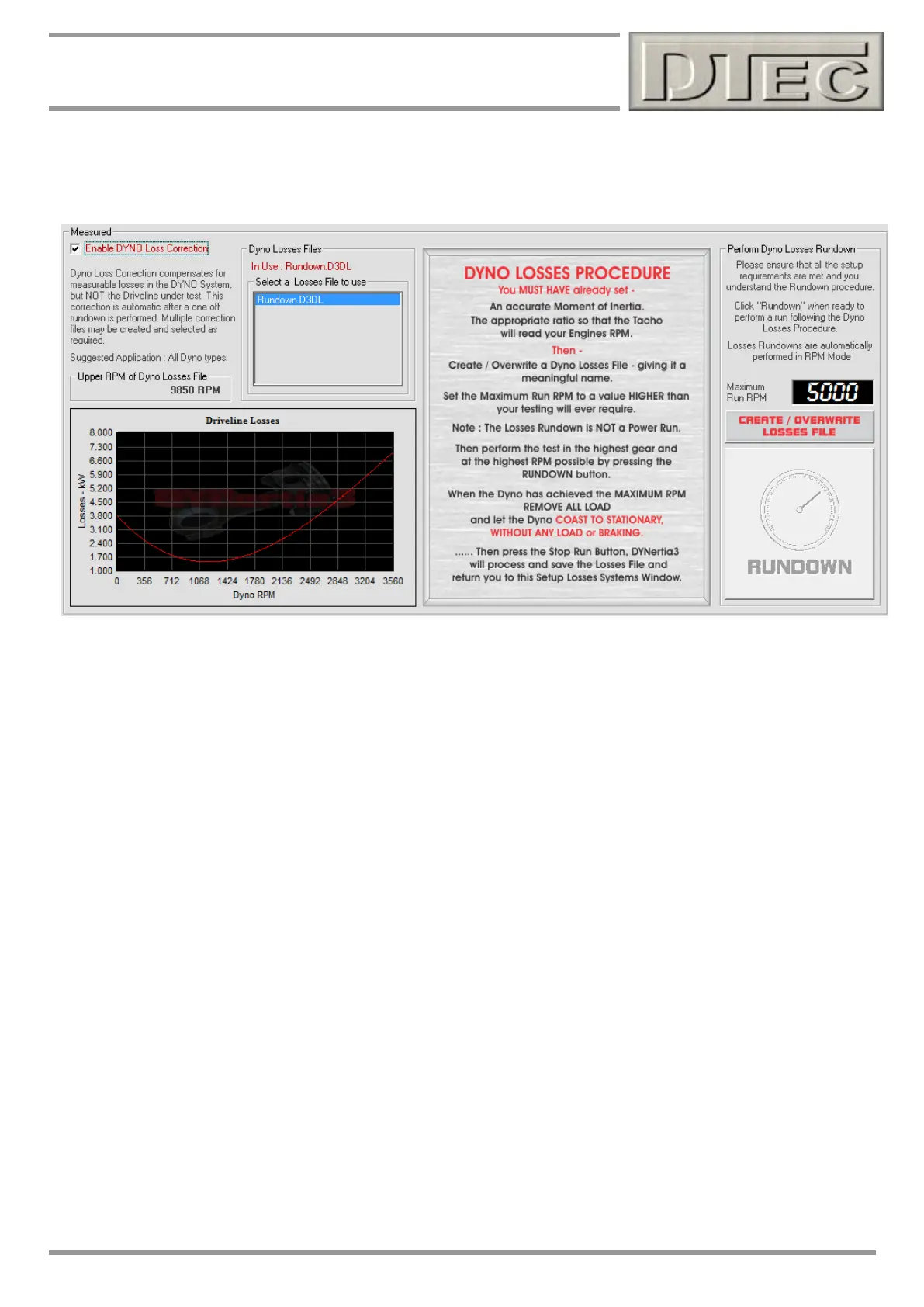www.dtec.net.au
Chapter 17: Losses Correction
MEASURED Mechanical Loss Correction
This enables Mechanical Losses within the Dyno to be automatically and predictably corrected based on a “Correction
File” (multiple files allowed) created during this ‘one off’ Losses Calibration process.
This is designed a ‘One off’ test usually as the losses on a given dyno won’t alter greatly. The losses characteristic is
then applied to all future tests as long as Losses are active. The results of your test (or selected saved files) can be
viewed in the above Window.
The rotating components of the dyno need to be SAFELY spun to an RPM preferably higher than future runs and then
let coast down to a stop without any external load. The deceleration of the dyno is then completely dependent on its
losses.
Note: The max safe RPM should be reached, though DYNertia3 software will extrapolate the data to create a curve that
extends beyond your set values.
Tip- Testing by leaving the vehicle on the rollers will compensate for not only dyno losses but vehicle drive losses also.
This is NOT A POWER RUN - it’s all about roller RPM (speed) so it can be performed in a higher gear or with different
ratios than you would normally use - and at a much gentler acceleration rate.
However, you must REMOVE or FULLY DISCONNECT whatever you are using to spin the mass once It’s reached the
maximum RPM. If not, the driveline friction will be considered as part of the losses (this may be even desirable in some
cases).
On a bike chassis dyno this may involve lifting the bike off the roller. On an engine Dyno the over-run clutch (sometimes
fitted for 2 stroke testing) will automatically disconnect the motor. A bike de-clutched has very low friction (if not
excessively tensioned down and well inflated tyres) and may prove suitable for a car chassis dyno.
There’s no need to do this for a specific bike/kart/car/motor, anything that can spin the dyno to your required maximum
mass RPM (above normal test RPM is desired) is satisfactory.
There are indicators in ‘DYNertia3 File Explorer’ and attached to trace information to always show if losses were applied
and what file was used. The effect of losses on the result can be viewed in the menu ‘View / Losses’.
Note: The RPM set as a maximum is not the actual dyno shaft RPM (unless record settings is set to ‘shaft RPM’). It is
whatever you have set via ratios etc. i.e. generally engine RPM, so bare this in mind when testing. The RPM gauge will
reflect this RPM, not the dyno shaft!
